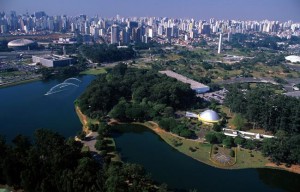 Sao Paulo Population 2013
Sao Paulo Population 2013
The most recent estimate for the population of the city of Sao Paulo, Brazil is about 11,822,000, which is an increase of about 4.5% from the last record of the population. The city is not only the capital of the most populous state in Brazil, but is also the most populous city in all of Brazil and the largest city proper in the entire southern hemisphere. Lastly, the city is the sixth most populous city in the entire world. Based on the total land area and the total population of the city, the population density of Sao Paulo is about 20,105 people per square mile.
Demographics of Sao Paulo
During the 19th and 20th centuries, immigration to the city of Sao Paulo was very popular, which has led to the diverse population of the city today. There are Europeans, Arabs, Latin Americans, North Americans, Africans, and Asians. These diverse populations have affected the entire culture and have made it what it is today. A resident of the city is known as a Paulistano.
The largest ethnic group in the city, however, is the Italian group. In fact, it is said that more people of Italian descent live in Sao Paulo than in Rome. The neighborhood of Bras is very much associated with the immigration of Italians and where they worked and lived in the 19th century. Because of this, this is where the Immigrant Memorial is located.
Because of the large influence of Italians in the city, the main language spoken in the city is Portuguese due to the population in Italy that spoke Portuguese. However, the city has specific dialects, again as a result of the Italian population, developed in Mooca. The largest Japanese population outside of Japan is located in the Liberdade neighborhood. Japanese is, therefore, another prominently spoken language in the city. There are some other immigrant communities that still speak their native languages, however.
The literacy rate of the city is higher than the country’s average. About 97% of the city, ages 10 and older, is considered literate, compared to 91% of the entire country. About 17% of the population has a college degree. Also, 66% of the population is considered to be of a working age, 27% are children, and 7% are seniors.
Religion in Sao Paulo
The largest religious organization in the city of Sao Paulo is the Roman Catholic Church. About 58% of the population identifies as Catholic. The next largest religion is the Protestant faith, making up about 22% of the population. Those who identify with no religion makes up about 9.4% of the population, which is considered the third largest category of religion in the city. There are populations of Spiritists, Buddhists, and Jews.
Economy of Sao Paulo
About 55% of the population of Sao Paulo is employed, which is an increase of about 0.9% from the last record of employed people. The city accounts for about 12.3% of the entire country’s Gross Domestic Product. It used to be a city heavily focused on its strong industrialization, but is now moving towards service and technology-based activities. Manpower is slowly being replaced by technology. Also, the entertainment, construction, and tourism sectors are growing rapidly throughout the city. Another major business in the city is the production of motor vehicles. Lastly, the official stock and bond exchange of Brazil, the Sao Paulo Stock Exchange, is located in the city of Sao Paulo.
 Sports in Sao Paulo
Sports in Sao Paulo
One of the most popular sports in the city, if not the most popular, is football (American soccer). Some of the major teams include Sao Paulo, Corinthians, and Palmeiras. Sao Paulo plays at Morumbi Stadium, which is the largest and most popular stadium in the city. The Corinthians represents the work class of the population, while Sao Paulo is the elitist club. Lastly, the Palmeiras represent the Italian community.
Visit Sao Paulo
Other Sao Paulo Resources
Learn more about Sao Paulo population statistics and demographics here.